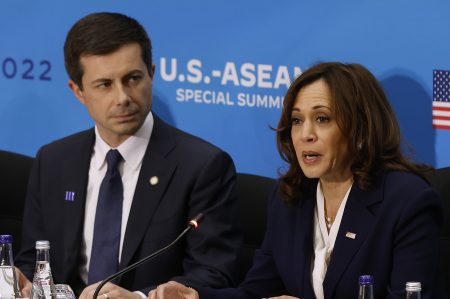The unexpected fall of Bashar al-Assad’s regime in Syria has reignited hope and intensified efforts to locate and repatriate American journalist and Marine veteran, Austin Tice, who was abducted twelve years ago while reporting on the Syrian uprising. The Biden administration has launched a renewed push for Tice’s return, spearheaded by hostage affairs envoy Roger Carstens, who has initiated outreach in Beirut and is actively engaging with various sources within Syria to gather intelligence on Tice’s whereabouts. This renewed effort underscores the administration’s unwavering commitment to bringing Tice home, a commitment reiterated by National Security Advisor Jake Sullivan and State Department spokesman Matthew Miller.
The U.S. government is employing multiple avenues to achieve this goal. The FBI has a standing reward of up to $1 million for credible information leading to Tice’s safe return, while the State Department’s Rewards for Justice program offers a significantly higher sum of up to $10 million. These substantial rewards demonstrate the seriousness with which the U.S. treats this case. Furthermore, the administration is collaborating with partners in Turkey to communicate with individuals within Syria who might possess valuable information regarding Tice’s location, possibly even pinpointing the specific prison where he is believed to be held. This collaborative approach highlights the complex and multifaceted nature of the search, requiring international cooperation to navigate the intricacies of the Syrian situation.
Tice’s abduction in 2012 occurred during the early stages of the Syrian civil war, as he reported on the uprising against Assad. While the Tice family maintains their belief that he is still alive, and intermittent reports have hinted at his potential whereabouts, verifying the credibility of such information has proved challenging. Previous reports suggested that Tice might be held captive by a group associated with Hezbollah, based on information from a Lebanese source. However, the opaque nature of the situation and the shifting power dynamics within Syria have consistently hampered efforts to confirm these reports and secure his release.
The complex history of U.S. engagement with the Assad regime regarding Tice’s captivity further complicates the situation. In 2020, President Biden publicly accused the Assad regime of holding Tice and demanded his release. The regime denied these accusations, further clouding the picture and hindering any direct negotiations. The U.S. has reportedly engaged in back-channel discussions with Syria through Lebanese intermediaries, including under the Biden administration, but these efforts have yielded little progress. Syrian officials remained reluctant to engage in meaningful talks about Tice’s release, reportedly offering only proof-of-life if the U.S. met certain demands, such as troop withdrawal from Syria. This stalemate has been a major obstacle in securing Tice’s freedom.
The dramatic shift in the Syrian power landscape, marked by Assad’s ousting and the rebel takeover, has introduced a new element of both hope and uncertainty into the search for Tice. The collapse of the Assad regime, coupled with the weakening of Hezbollah following Israel’s campaign in Lebanon, and the dwindling support from Russia and Iran, has led to the release of thousands of prisoners from Syria’s notoriously brutal prisons, including the infamous Saydnaya military prison. This mass release has generated fresh optimism for the families of missing individuals, including the Tice family, as it raises the possibility that he might be among those freed.
While President Biden has expressed hope for Tice’s return, acknowledging the belief that he is still alive, he also emphasized the lack of direct evidence confirming his current status and location. The ongoing efforts to locate Tice represent a difficult and delicate operation, requiring careful navigation of the volatile political environment in Syria. The fall of the Assad regime, while creating new challenges, also presents a unique opportunity to pursue fresh leads and potentially secure Tice’s release. The focus remains on gathering actionable intelligence and utilizing all available diplomatic channels to bring this long ordeal to a positive conclusion and reunite Austin Tice with his family.










